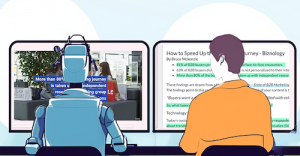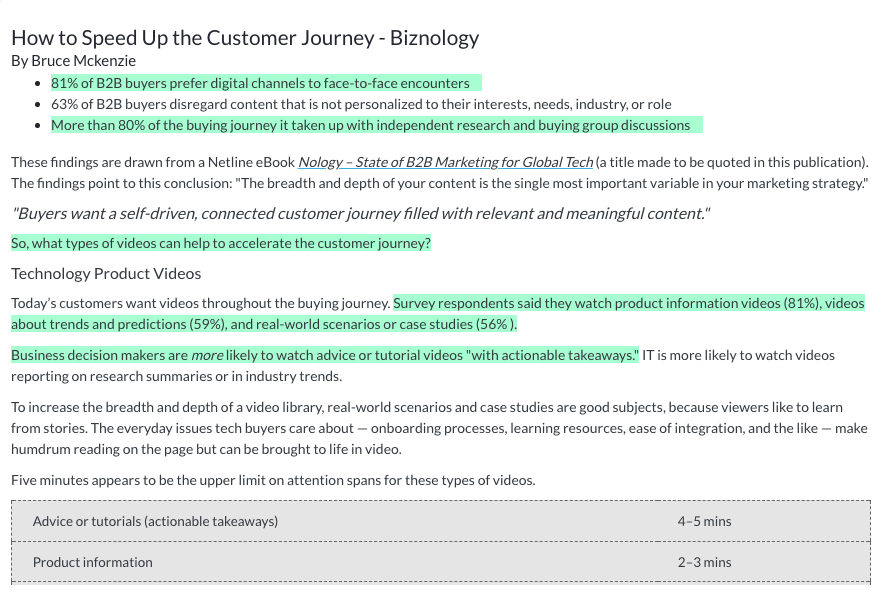
Like many professionals these days, I’ve been wondering how about artificial intelligence is working its way into fields where I use my intelligence. Since my company is frequently tasked with turning text — like case studies — into video, I decided to take a look at Pictory, an AI tool considered one of the best at text-to-video tasks.
Text-to-video: Transforming an Article into a Script
For my experiment, I used the text of my most recent Biznology article, which talks about the content preferences of buying teams who are evaluating software solutions. Like most text, the article was written with no thought given to how it would work as a video. That makes text-to-video a challenge for any form of intelligence.

The AI started out by highlighting the key points in the text. I don’t think that any human reader would have a made the same selections. But Pictory’s interface is so simple and user-friendly that It only took a few minutes to edit the AI’s work to reflect the ideas that I thought would appeal to the viewer of the video.
From Script to Storyboard
The AI’s next task was to create storyboards. Instead of still images, it cranked out a series of scenes with the text of the key script points superimposed on a video clip that came from Pictory’s library of some 3,000,000 clips.
The AI’s video selection here was off the mark, but fun. Its weak grasp of its subject at this point was quite obvious, but oddly endearing. For example, the scene in the video where the buying team shops for a technology upgrade at a mall’s Black Friday sale made me laugh. These tech decision-makers didn’t know about Cyber Monday? But, again, I was impressed by how easy it was to find more appropriate video clips in Pictory’s library.
A much bigger problem was the series of scenes which amounted to nearly two minutes of reading on-screen text on top of video. Although this was more-or-less appropriate, it was also distracting; so it made it harder to absorb the information by adding “cognitive load.”
Text-to-video editing
I should say that while I’m good at working with video editors, I’m not in the least skilled at DIY editing. I found Pictory’s tools to be simple and fun to use, but somewhat frustrating.
It took me around five hours to combine and condense my scenes to make the 30-second text-to-video production I’m (reluctantly) sharing here. I don’t think it’s very good — but it’s not terrible.
In this experiment, video AI service Pictory converted text-to-video by adding titles to stock video.
Also, note that for this experiment, I didn’t substantially change the text in the article. To make a real video, you start with a script like a screenplay that specifies everything that is seen and heard on-screen.
Pictory does allow you to work from a script, and to upload your own video clips and images. You can add your own music and narration. or use music from their library and have the production narrated by one of their AI voices.
Give It a Try
To sum up, I don’t think AI is coming for my job any time soon, but it can generate some pretty good content for your library and outreach programs.
For example, AIs like Pictory can help you with tasks besides text-to-video:
- Transcribe a webinar and turn selected scenes (including software demos) into short videos.
- Create a personalized invitation
- Create a teaser for a blog post or white paper
- Add captions and titles to an existing video
- Transcribe a Zoom meeting and add captions
In short, it’s pretty clear that AI can help companies make better use of video to explain what they do. And I’m cool with that.





